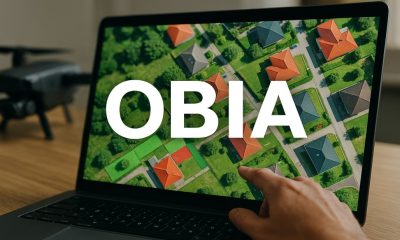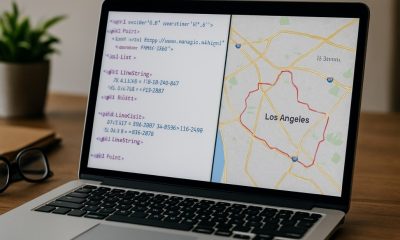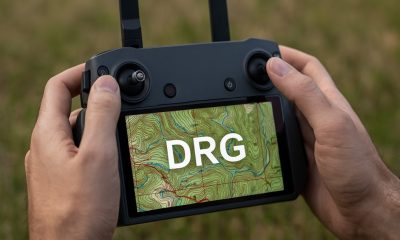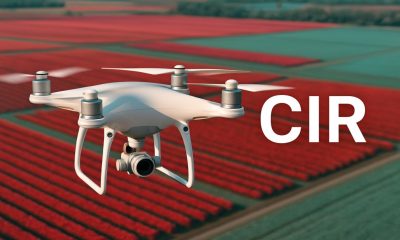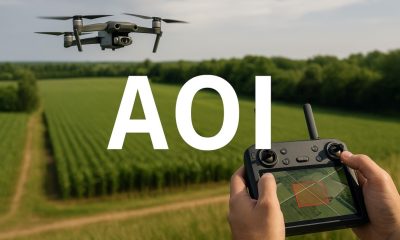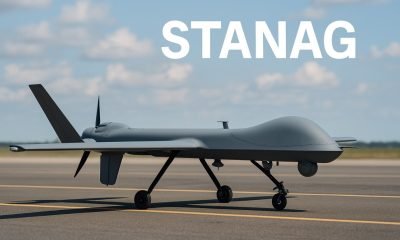- Acronym Guide
- AAM
- ABS
- AC
- ACAS
- ADS-B
- AFAC
- AGL
- AI
- AIM
- ALS
- AM
- AMA
- ANSP
- AOI
- APPI
- AUV
- AUVSI
- ARPAS-UK
- ASTM
- ATC
- BVLOS
- CAA
- CAAC
- CAB
- CASA
- CATT
- CBO
- CBR
- CBRN
- CDMA
- CDR
- CFR
- CIR
- COA
- COMINT
- CORS
- COTP
- COTR
- CPTED
- CV
- C2
- DAA
- DEM
- DFI
- DFS
- DGCA
- DHS
- DOD
- DPA
- DPEs
- DRG
- DRO
- DSM
- DSMX
- DSP
- DSSS
- DTM
- EASA
- EFT
- EO
- EOD
- EO/IR
- ELINT
- EMI
- ESC
- EVLOS
- eVTOLs
- FAA
- FCC
- FCS
- FHSS
- FICCI
- FLIR
- FOB
- FOV
- FPS
- FPV
- GBDAA
- GCP
- GCS
- GDPR
- GML
- GNSS
- GPS
- GSD
- GVC
- HDR
- HOGE
- IACRA
- ICAO
- ICS
- IMU
- INS
- IR
- ISA
- ISR
- ITU
- JARUS
- LAAMS
- LAANC
- LAATM
- LAI
- LBA
- LIDAR
- LOS
- LSALT
- MAC
- MAVLink
- MLIT
- MMS
- MSL
- MTOM
- NDAA
- NCSL
- NFZ
- NIST
- NMEA
- NOTAM
- NPA
- NPRM
- NTIA
- OBIA
- OEM
- OFDM
- OOP
- PASM
- PAV
- PCV
- PdM
- PEC
- PIC
- PID
- PIPL
- PLD
- PM
- PN
- PPK
- PPS
- PSM
- PWM
- UAM
- UAOP
- UAS
- UASTM
- UAV
- UCAVs
- UHD
- UHF
- USV
- UTM
- RAIM
- RCC
- RCS
- RFI
- ReOC
- RePL
- RMS
- ROI
- RPAS
- RPC
- RTH
- RTK
- SaR
- SAR
- SARP
- SBAS
- S.Bus
- SBIR
- SEDENA
- SfM
- SFOC
- SIGINT
- SLAM
- SMS
- SORA
- STANAG
- STTR
- sUAS
- TCAS
- TCCA
- TFR
- TIN
- TOF
- TP
- TPS
- TSA
- VHF
- VLOS
- VTOL
Drone Acronyms
What is IACRA?
By
Jacob StonerTable Of Contents

Definition
IACRA stands for Integrated Airman Certification and Rating Application. It is an online system developed by the Federal Aviation Administration (FAA) that guides users through the process of applying for and receiving airman certifications and ratings. IACRA ensures that applicants meet regulatory and policy requirements through automated validation.
Relevance to the Industry
IACRA is essential for maintaining the integrity and efficiency of the certification process in the aviation industry. For drone operators, it is particularly relevant when applying for a Remote Pilot Certificate under Part 107, which is required for commercial drone operations in the United States.
How Does the Integrated Airman Certification and Rating Application (IACRA) Work?
The Integrated Airman Certification and Rating Application (IACRA) is an online system used by the Federal Aviation Administration (FAA) to process airman certification applications. IACRA streamlines the certification process, ensuring compliance with regulatory requirements and improving efficiency for applicants, instructors, and FAA representatives. Here’s a detailed explanation of how IACRA works:
1. Purpose and Importance
- Streamlined Process: IACRA simplifies the airman certification process by providing an integrated, online platform for completing and submitting applications.
- Regulatory Compliance: Ensures that all applications comply with FAA regulations and standards, reducing errors and processing time.
- Enhanced Tracking: Provides real-time tracking of application status, allowing applicants and certifying officials to monitor progress.
2. Key Components of IACRA
- User Accounts: IACRA supports multiple types of user accounts, including applicants, instructors, designated pilot examiners (DPEs), and FAA representatives.
- Application Forms: Digital forms for various certifications and ratings, including pilot certificates, flight instructor certificates, and mechanic certificates.
- Electronic Signatures: Secure electronic signatures are used to sign and validate application forms, ensuring authenticity and integrity.
- Validation and Verification: Automated checks to ensure that applications meet regulatory requirements and that applicant information is accurate and complete.
- Workflow Management: A structured workflow that guides users through the application process, ensuring that all necessary steps are completed in the correct order.
3. How IACRA Works
- Account Creation and Login:
- User Registration: Users create an IACRA account by providing personal information and creating login credentials. Different user roles (e.g., applicant, instructor, DPE) have different registration requirements.
- Login: Users log in to their IACRA account to start or continue an application.
- Application Initiation:
- Form Selection: The user selects the appropriate certification or rating application form based on their needs.
- Information Entry: Applicants enter their personal information, flight experience, and other required details into the digital form.
- Instructor Endorsement: If required, an instructor reviews the application, provides endorsements, and signs the application electronically.
- Application Submission and Review:
- Submission to DPE: Once the application is complete, it is submitted to a Designated Pilot Examiner (DPE) or FAA representative for review.
- Review Process: The DPE or FAA representative reviews the application, verifies the information, and conducts any necessary tests or checks.
- Electronic Signatures: The DPE or FAA representative signs the application electronically to confirm that all requirements have been met.
- Validation and Verification:
- Automated Checks: IACRA performs automated validation checks to ensure that the application is complete and meets regulatory requirements.
- Manual Review: Additional manual reviews may be conducted by FAA representatives to ensure accuracy and compliance.
- Certification Issuance:
- Approval: Once the application is validated and verified, the certification or rating is approved.
- Temporary Certificate: A temporary certificate is issued to the applicant, allowing them to exercise their privileges while the permanent certificate is processed.
- Permanent Certificate: The permanent certificate is mailed to the applicant once all processing is complete.
4. Applications and Use Cases
- Pilot Certification: IACRA is used for obtaining various pilot certificates, including private pilot, commercial pilot, airline transport pilot, and flight instructor certificates.
- Mechanic Certification: Aircraft mechanics use IACRA to apply for mechanic certificates and ratings.
- Drone Operators: Drone operators use IACRA to apply for remote pilot certificates under Part 107.
- Flight Schools and Training Centers: Flight schools and training centers use IACRA to manage student applications and ensure compliance with FAA training requirements.
5. Advantages and Challenges
- Advantages:
- Efficiency: IACRA streamlines the certification process, reducing the time and effort required to complete and submit applications.
- Accuracy: Automated validation checks reduce errors and ensure that applications comply with regulatory requirements.
- Transparency: Real-time tracking of application status provides transparency and allows users to monitor progress.
- Convenience: Online access allows users to complete and submit applications from anywhere, at any time.
- Challenges:
- Technical Issues: Users may encounter technical issues with the online system, such as connectivity problems or software glitches.
- User Familiarity: Some users may find it challenging to navigate the online system, particularly those who are less familiar with digital platforms.
- Data Security: Ensuring the security and privacy of personal information entered into the IACRA system is critical.
6. Technological Advances
- Enhanced User Interface: Continuous improvements to the user interface make IACRA more user-friendly and intuitive.
- Mobile Accessibility: Development of mobile-compatible versions of IACRA to allow users to complete applications on smartphones and tablets.
- Integration with Other Systems: Integration with other FAA systems and databases to streamline data sharing and reduce redundancy.
- Artificial Intelligence and Machine Learning: Use of AI and machine learning to improve validation checks, detect errors, and provide personalized assistance to users.
Understanding how the Integrated Airman Certification and Rating Application (IACRA) works highlights its critical role in modernizing the FAA’s certification processes. By providing a streamlined, efficient, and secure online platform, IACRA ensures that airman certification applications are processed accurately and promptly, benefiting applicants, instructors, and regulatory authorities alike.
Example in Use
“The drone operator used the IACRA system to apply for a Remote Pilot Certificate, ensuring compliance with FAA regulations.”
Frequently Asked Questions about IACRA (Integrated Airman Certification and Rating Application)
1. What is the purpose of IACRA?
Answer: The purpose of IACRA is to streamline the process of applying for airman certifications and ratings. It ensures that applicants meet all necessary regulatory and policy requirements through automated validation and provides a secure, user-friendly platform for managing certification and rating applications.
2. How do drone operators use IACRA?
Answer: Drone operators use IACRA to:
- Apply for Certification: Submit applications for the Remote Pilot Certificate required for commercial drone operations.
- Track Application Status: Monitor the progress of their certification application and receive updates.
- Ensure Compliance: Validate that they meet all FAA requirements for certification, including passing the necessary knowledge exams and background checks.
- Access Records: Retrieve and manage their certification records and documentation.
3. What are the benefits of using the IACRA system?
Answer: The benefits of using the IACRA system include:
- Efficiency: Streamlines the certification process, reducing paperwork and processing times.
- Accuracy: Ensures that applications are complete and accurate, minimizing errors and delays.
- Security: Provides a secure platform for managing sensitive personal and certification information.
- Transparency: Allows applicants to track the status of their applications and receive timely updates.
- Compliance: Helps ensure that all regulatory requirements are met, supporting the integrity of the certification process.
For examples of these acronyms visit our Industries page.
As the CEO of Flyeye.io, Jacob Stoner spearheads the company's operations with his extensive expertise in the drone industry. He is a licensed commercial drone operator in Canada, where he frequently conducts drone inspections. Jacob is a highly respected figure within his local drone community, where he indulges his passion for videography during his leisure time. Above all, Jacob's keen interest lies in the potential societal impact of drone technology advancements.
